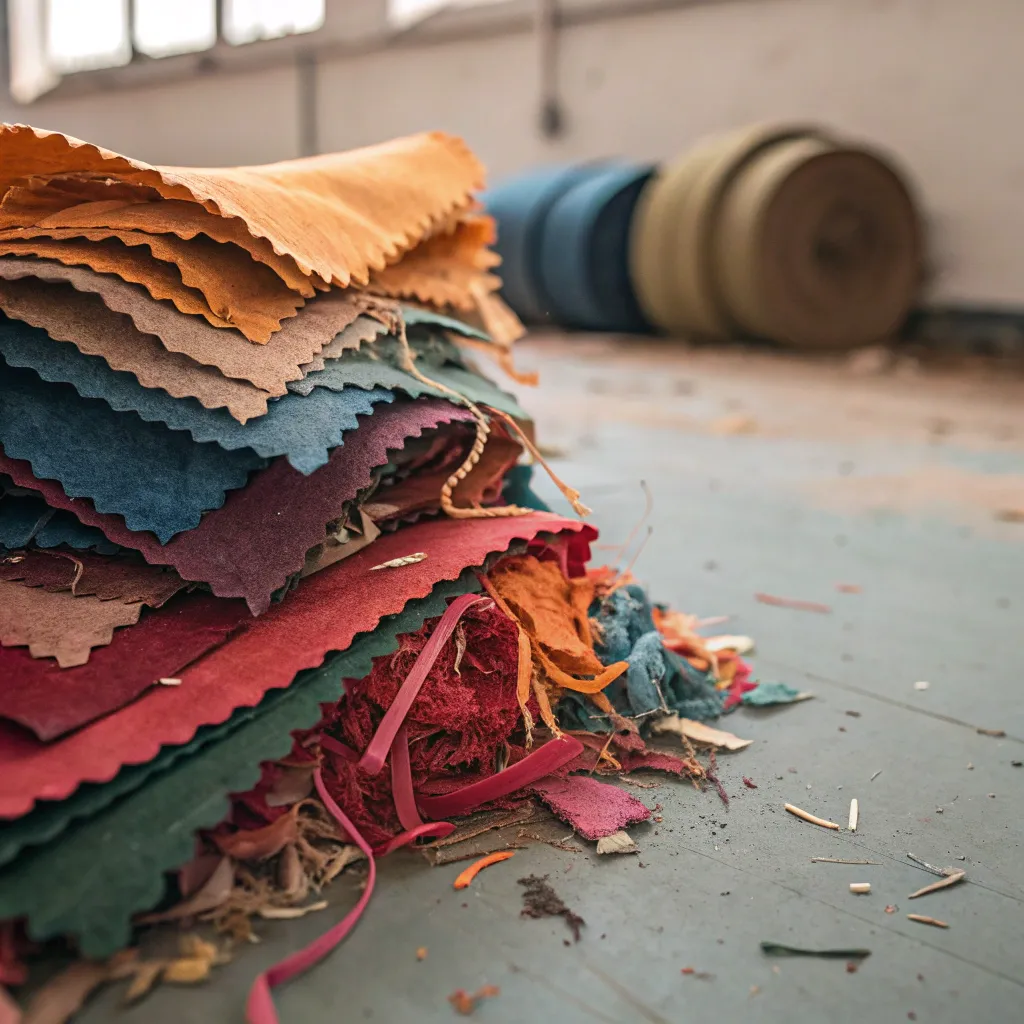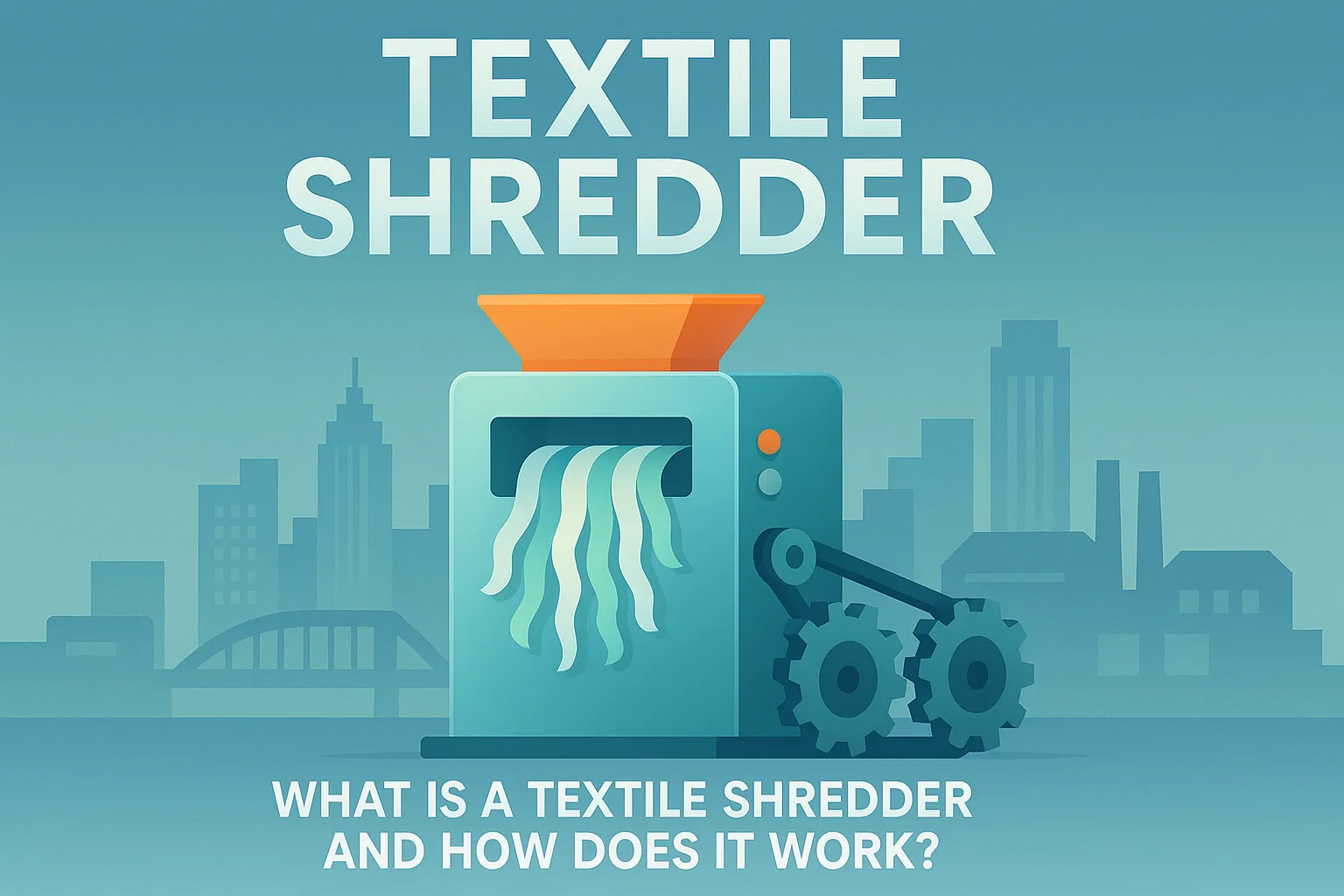Textile waste is a growing concern worldwide, with millions of tons of discarded clothing, fabrics, and carpets piling up in landfills each year. As sustainability becomes a priority for businesses and consumers alike, textile shredders have emerged as a powerful tool for recycling and repurposing textile waste. But what exactly is a textile shredder, and how does it transform old fabrics into valuable resources? In this article, we’ll explore the ins and outs of textile shredders, their working mechanisms, applications, and why they’re essential for a circular economy.
Understanding Textile Shredders
A textile shredder is a specialized industrial machine designed to break down fabrics, clothing, carpets, and other textile materials into smaller, manageable pieces. These machines are engineered to handle the unique challenges of textiles, such as their fibrous nature, elasticity, and components like zippers, buttons, or synthetic blends. By shredding textiles, businesses can prepare materials for recycling, secure destruction, or alternative uses like insulation or fuel production.
Textile shredders come in various configurations, including single-shaft, dual-shaft, and quad-shaft models, each suited for specific throughput needs and output sizes. Whether you’re a recycling facility, apparel manufacturer, or waste management company, understanding how these machines work can help you optimize your operations and reduce environmental impact.
Why Textile Shredders Matter
The textile industry is one of the most resource-intensive sectors, contributing significantly to waste and pollution. According to the Environmental Protection Agency, over 17 million tons of textile waste are generated annually in the U.S. alone, with only a fraction being recycled. Textile shredders play a critical role in addressing this issue by:
- Reducing landfill waste: Shredded textiles can be repurposed instead of discarded.
- Promoting recycling: Shredders prepare materials for fiber reclamation or new product manufacturing.
- Protecting intellectual property: Shredding ensures counterfeit goods, prototypes, or defective items are securely destroyed.
- Supporting sustainability: By enabling a circular economy, shredders help conserve resources and reduce carbon footprints.
How Does a Textile Shredder Work?
The working mechanism of a textile shredder is both straightforward and sophisticated, involving several key components and stages. Here’s a step-by-step breakdown of how these machines operate:
1. Feeding the Machine
The process begins with feeding textiles into the shredder. Depending on the machine’s design, materials can be loaded manually, via a hopper, or through a conveyor belt for continuous operation. Automated feeding systems are common in high-volume settings, ensuring efficiency and safety by keeping operators away from moving parts.
Pro Tip: Sorting textiles by type (e.g., cotton, polyester, or blended fabrics) before feeding can improve shredding efficiency and output quality, especially for recycling purposes.

2. Grabbing and Pulling
Once inside, the shredder’s grabbing mechanism takes over. This involves hooks or teeth on the rotor that catch the fabric and pull it toward the cutting blades. The grabbing process is crucial for handling bulky or tangled textiles, such as carpets or quilts, and depends on the rotor’s design and the material’s texture.
3. Shredding and Cutting
The heart of the textile shredder is its cutting chamber, where rotating blades or knives shear the material into smaller pieces. The shredding process typically involves one or more of the following techniques:
- Shearing: Blades cut through textiles like scissors, producing clean, uniform pieces.
- Tearing: Hooked blades pull and rip materials apart, ideal for tough or elastic fabrics.
- Fracturing: Used for brittle components like buttons or zippers, breaking them into fragments.
The number of shafts (single, dual, or quad) and blade configuration determines the shredder’s power and output size. For example, dual-shaft shredders use interlocking blades for thorough processing, while single-shaft models are better for uniform materials.
4. Screening and Output Control
After shredding, the material passes through a screen that controls the size of the output. Screens with different hole sizes allow operators to customize the particle size, ranging from coarse chunks to fine fibers. This step is vital for applications like recycling, where specific fiber lengths are needed, or secure destruction, where materials must be unrecognizable.
5. Collecting the Shredded Material
The shredded textiles are collected in a bin, bag, or conveyor system for further processing. Depending on the application, the output may be baled, spun into new yarns, or used directly as filler for products like insulation or upholstery.
Did You Know? Advanced textile shredders can process up to 1000 kg of material per hour, making them indispensable for large-scale recycling operations.
Key Components of a Textile Shredder
To better understand how textile shredders function, let’s look at their core components:
- Rotor: The rotating shaft equipped with blades or hooks that drives the shredding process.
- Blades: Made of hardened alloy steel, these are designed to withstand wear and tear from tough materials.
- Housing: A heavy-duty metal enclosure that contains all components and ensures safety.
- Motor: Powers the rotor, delivering the torque needed to shred dense textiles.
- Control System: Modern shredders feature touch panels or smart technology for real-time adjustments and monitoring.
- Feeding System: Hoppers or conveyors that guide materials into the shredder efficiently.
Each component is engineered for durability and precision, ensuring the machine can handle diverse textiles without jamming or excessive wear.
Applications of Textile Shredders
Textile shredders are versatile machines with applications across multiple industries. Here are some of the most common uses:
1. Textile Recycling
Shredders break down fabrics into fibers that can be spun into new yarns or woven into textiles. This process is key to creating sustainable fabrics and reducing reliance on virgin materials. For instance, shredded cotton can be blended with new fibers to produce durable clothing.

2. Secure Destruction
Apparel brands use shredders to destroy counterfeit goods, defective products, or outdated stock, protecting their intellectual property. The fine output ensures materials cannot be reused or identified.
3. Waste-to-Energy
Shredded textiles can be processed into refuse-derived fuel (RDF) for industrial furnaces or boilers. This application is particularly useful for non-recyclable fabrics like synthetic blends.
4. Upcycling and Repurposing
Creative industries use shredded textiles as stuffing for quilts, insulation for buildings, or padding for furniture. Designers like those at AFRAYED Upcycling have even turned shredded scraps into unique quilted garments.
5. Carpet Recycling
Carpets, which are notoriously difficult to recycle due to their layered construction, can be shredded into components for reclamation or energy production.
Choosing the Right Textile Shredder
Selecting a textile shredder depends on your specific needs. Here are some factors to consider:
- Material Type: Ensure the shredder can handle your textiles, whether natural fibers, synthetics, or mixed materials with accessories like zippers.
- Throughput: Match the machine’s capacity to your daily or hourly processing volume.
- Output Size: Decide if you need coarse chunks for fuel or fine fibers for recycling.
- Safety Features: Look for emergency stop buttons, protective guards, and OSHA-compliant designs.
- Maintenance: Opt for modular designs with easy blade access to minimize downtime.
Quick Tip: Partner with reputable manufacturers like Energycle, Vecoplan, or Shred-Tech, known for their durable and efficient shredders tailored to textile applications.
Benefits of Using Textile Shredders
Investing in a textile shredder offers numerous advantages for businesses and the environment:
- Cost Savings: Reduce disposal fees by recycling or repurposing waste.
- Revenue Opportunities: Sell shredded fibers or recycled products for additional income.
- Environmental Impact: Lower greenhouse gas emissions and conserve natural resources.
- Compliance: Meet waste management regulations and sustainability standards.
- Efficiency: Streamline operations with automated, high-capacity shredding.
Challenges and Solutions
While textile shredders are highly effective, they come with challenges:
- Challenge: Jamming from tough materials like Kevlar or thick carpets. Solution: Choose a shredder with high-torque motors and anti-jam features.
- Challenge: Dust generation during shredding. Solution: Use machines with dust suppression systems or enclosed designs.
- Challenge: High maintenance costs for blade wear. Solution: Invest in shredders with wear-resistant blades and modular components for easy repairs.
The Future of Textile Shredders
As the demand for sustainable practices grows, textile shredders are evolving with cutting-edge innovations. Smart technology now allows remote monitoring and predictive maintenance, reducing downtime. Additionally, advancements in blade design and energy efficiency are making shredders more cost-effective and eco-friendly. With the global textile recycling market projected to reach $9.4 billion by 2027, these machines will play a pivotal role in shaping a greener future.
Conclusion
Textile shredders are more than just machines—they’re catalysts for change in the fight against textile waste. By transforming old clothes, fabrics, and carpets into reusable resources, they support recycling, sustainability, and innovation. Whether you’re looking to recycle fibers, destroy defective goods, or create upcycled products, a textile shredder can unlock new opportunities for your business.
Ready to take the next step? Explore textile shredder options from trusted manufacturers, assess your needs, and join the movement toward a circular economy. Have questions or need advice? Drop a comment below, and let’s discuss how textile shredders can revolutionize your waste management strategy!



